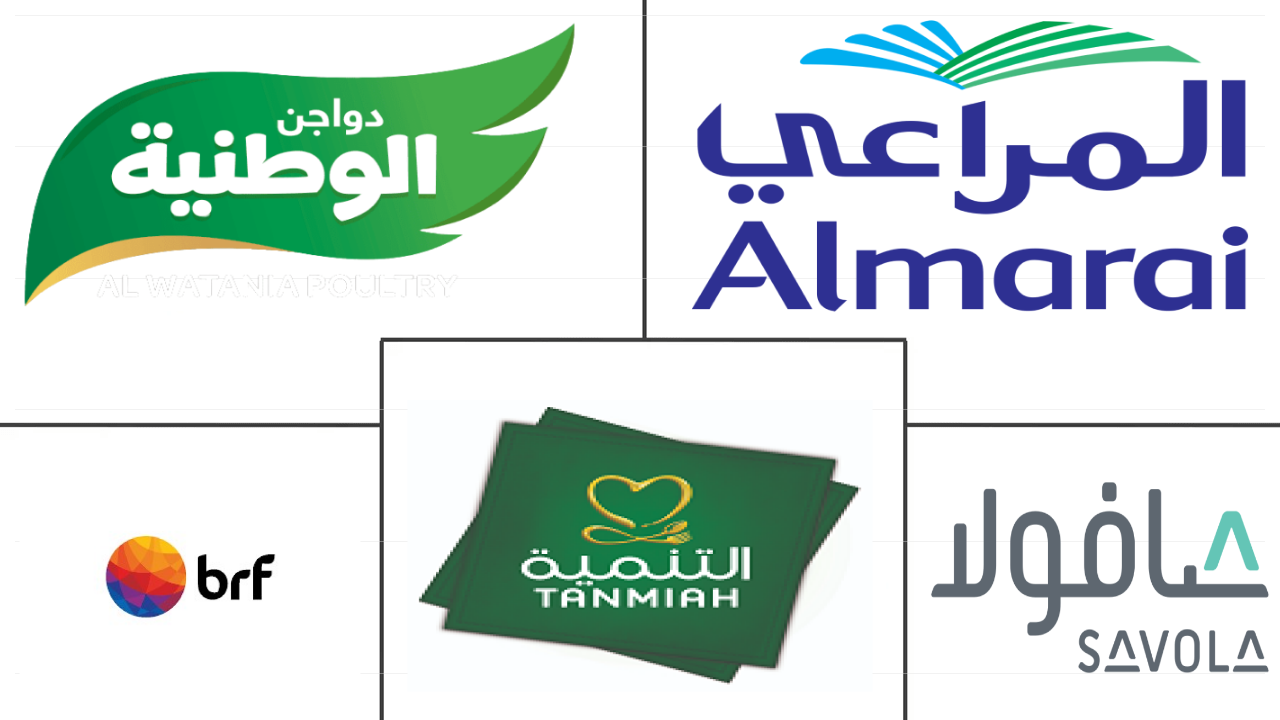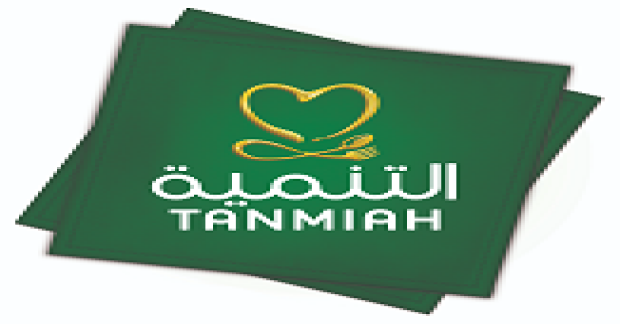Market Size of middle east poultry meat Industry
|
|
Study Period | 2017 - 2029 |
|
|
Market Size (2024) | USD 15.93 Billion |
|
|
Market Size (2029) | USD 17.51 Billion |
|
|
Largest Share by Distribution Channel | On-Trade |
|
|
CAGR (2024 - 2029) | 1.90 % |
|
|
Largest Share by Country | Saudi Arabia |
Major Players |
||

|
||
|
*Disclaimer: Major Players sorted in no particular order |
Middle East Poultry Meat Market Analysis
The Middle East Poultry Meat Market size is estimated at 15.93 billion USD in 2024, and is expected to reach 17.51 billion USD by 2029, growing at a CAGR of 1.90% during the forecast period (2024-2029).
15.93 Billion
Market Size in 2024 (USD)
17.51 Billion
Market Size in 2029 (USD)
5.00 %
CAGR (2017-2023)
1.90 %
CAGR (2024-2029)
Largest Segment by Form
54.32 %
value share, Fresh / Chilled, 2023
Fresh meats are considered to be of higher quality. The relaxation of the lockdown allowed customers to immediately purchase freshly cut meat through an offline channel.
Largest Segment by Country
31.70 %
value share, Saudi Arabia, 2023
Saudi consumers favor locally raised fresh chicken. Thus, the local regulatory bodies are encouraging local producers to boost meat production to cater to the surging demand.
Fastest-growing Segment by Form
2.66 %
Projected CAGR, Processed, 2024-2029
The increasing popularity of ready-to-eat and ready-to-cook meat to match the fast-paced lifestyle is projected to drive the demand for processed poultry meat in the region.
Fastest-growing Segment by Country
1.82 %
Projected CAGR, Saudi Arabia, 2024-2029
The surging demand supported by constant investments to boost the local production of poultry meat is projected to drive the Saudi market, mainly through off-trade channel.
Leading Market Player
1.91 %
market share, Tanmiah Food Company, 2022

The brand offers all types of poultry products in almost every part of the region. Around 90% of the products are sold due to the local brand equity of the company.
High internet penetration, social media marketing is boosting the growth of the market
- The distribution channels for poultry meat are dominated by the on-trade segment, through which almost two-thirds of the poultry meat products are consumed in the country. The growing food service industry is boosting sales of poultry meat in on-trade channels. Around 76% of consumers in the Middle East preferred to consume healthy food in 2021. Many consumers started trying new foods that were tested and invented by several on-trade channels across Middle Eastern food service establishments, which increased the market share of poultry meat. Food service businesses resorted to delivery platforms to make up for the foot traffic lost in their stores after the effect of the pandemic.
- The fastest-growing distribution segment is the off-trade segment, which is projected to record a CAGR of 2.20% by value during the forecast period. The growth of this segment will be fueled by the proliferation of the online trade channel, which has been booming in line with the large-scale expansion of e-commerce. Internet penetration has been increasing rapidly in the region. As of 2022, the Middle East had more than 200 million internet users, which amounted to 79% of the total population. Of this, 145.441 million were users of social media platforms, which is where most online meat delivery apps market their service and acquire customers through digital marketing.
- Supermarkets and hypermarkets witnessed a study growth with a CAGR of 6.21% by value from 2017 to 2022. Supermarkets and hypermarkets provide promotional offers and discounts. The growth in the segment is due to the presence of a wide range of products, including imported products, which are price-competitive when compared to local products.
Government's investments to achieve self-sufficiency in poultry meat
- The poultry meat market has been growing over recent years. During the historical period, it registered a CAGR of 5.40% by value in the Middle East. With the increased demand for poultry meat due to an increase in ex-pats, the government provided support to expand poultry production, leading to the growth of the market. The Middle East Poultry Expo is the largest exhibition in the poultry industry, organized in the Kingdom of Saudi Arabia. It enhances investment opportunities in the poultry industry and provides an ideal trading platform that brings local investors, suppliers, and global expertise houses together to develop the poultry industry and achieve self-sufficiency.
- The region witnessed an influx of ex-pats from Asia and Western countries, especially in UAE, Kuwait, and Saudi Arabia. The ex-pat population in Saudi Arabia was around 41.6%, whereas the UAE had around 90% ex-pat population as of 2022. The increasing ex-pat population is resulting in food preferences becoming more international, and food such as hamburgers and fried chicken are becoming popular with consumers in the region.
- Poultry meat is majorly consumed in Saudi Arabia. It is projected to register a growth rate of 1.84% by value during the forecast period. Saudi Arabia’s self-sufficiency in poultry meat production increased from 45% in 2016 to 68% in 2022. Saudi Arabia’s Minister of Environment plans to increase the Kingdom’s self-sufficiency rate for poultry meat by 80% by 2025. The new investments into Saudi Arabia’s poultry production sector will be valued at USD 4.5 billion by 2025, with plans to increase production capacity to 1.3 million metric tons of broiler chicken annually.
Middle East Poultry Meat Industry Segmentation
Canned, Fresh / Chilled, Frozen, Processed are covered as segments by Form. Off-Trade, On-Trade are covered as segments by Distribution Channel. Bahrain, Kuwait, Oman, Qatar, Saudi Arabia, United Arab Emirates are covered as segments by Country.
- The distribution channels for poultry meat are dominated by the on-trade segment, through which almost two-thirds of the poultry meat products are consumed in the country. The growing food service industry is boosting sales of poultry meat in on-trade channels. Around 76% of consumers in the Middle East preferred to consume healthy food in 2021. Many consumers started trying new foods that were tested and invented by several on-trade channels across Middle Eastern food service establishments, which increased the market share of poultry meat. Food service businesses resorted to delivery platforms to make up for the foot traffic lost in their stores after the effect of the pandemic.
- The fastest-growing distribution segment is the off-trade segment, which is projected to record a CAGR of 2.20% by value during the forecast period. The growth of this segment will be fueled by the proliferation of the online trade channel, which has been booming in line with the large-scale expansion of e-commerce. Internet penetration has been increasing rapidly in the region. As of 2022, the Middle East had more than 200 million internet users, which amounted to 79% of the total population. Of this, 145.441 million were users of social media platforms, which is where most online meat delivery apps market their service and acquire customers through digital marketing.
- Supermarkets and hypermarkets witnessed a study growth with a CAGR of 6.21% by value from 2017 to 2022. Supermarkets and hypermarkets provide promotional offers and discounts. The growth in the segment is due to the presence of a wide range of products, including imported products, which are price-competitive when compared to local products.
| Form | ||||||||||
| Canned | ||||||||||
| Fresh / Chilled | ||||||||||
| Frozen | ||||||||||
|
| Distribution Channel | ||||||
| ||||||
| On-Trade |
| Country | |
| Bahrain | |
| Kuwait | |
| Oman | |
| Qatar | |
| Saudi Arabia | |
| United Arab Emirates | |
| Rest of Middle East |
Middle East Poultry Meat Market Size Summary
The Middle East poultry meat market is experiencing a steady growth trajectory, driven by increasing consumer demand and strategic government support. The market is characterized by a significant shift towards both on-trade and off-trade distribution channels, with the on-trade segment benefiting from the burgeoning food service industry. The off-trade segment is expanding rapidly, fueled by the rise of e-commerce and online trade channels, which have gained traction due to high internet penetration and social media usage in the region. Supermarkets and hypermarkets are also contributing to market growth by offering a wide range of products and competitive pricing. The influx of expatriates has further diversified food preferences, increasing the popularity of international food items like hamburgers and fried chicken, thereby boosting poultry consumption.
Saudi Arabia stands out as the largest producer of poultry in the region, with significant investments aimed at enhancing self-sufficiency and production capacity. The country's strategic initiatives include collaborations with the private sector and reforms in the subsidy system to support poultry producers. Despite challenges such as rising feed costs and price controls, local production has seen substantial growth, with major producers expanding their facilities. The market remains fragmented, with key players like Al-Watania Poultry and Tanmiah Food Company leading the charge. Recent strategic partnerships and acquisitions by major companies are expected to further strengthen market penetration and production capabilities, ensuring the region's poultry meat market continues to evolve and expand.
Middle East Poultry Meat Market Size - Table of Contents
-
1. MARKET SEGMENTATION (includes market size in Value in USD, Forecasts up to 2029 and analysis of growth prospects)
-
1.1 Form
-
1.1.1 Canned
-
1.1.2 Fresh / Chilled
-
1.1.3 Frozen
-
1.1.4 Processed
-
1.1.4.1 By Processed Types
-
1.1.4.1.1 Deli Meats
-
1.1.4.1.2 Marinated/ Tenders
-
1.1.4.1.3 Meatballs
-
1.1.4.1.4 Nuggets
-
1.1.4.1.5 Sausages
-
1.1.4.1.6 Other Processed Poultry
-
-
-
-
1.2 Distribution Channel
-
1.2.1 Off-Trade
-
1.2.1.1 Convenience Stores
-
1.2.1.2 Online Channel
-
1.2.1.3 Supermarkets and Hypermarkets
-
1.2.1.4 Others
-
-
1.2.2 On-Trade
-
-
1.3 Country
-
1.3.1 Bahrain
-
1.3.2 Kuwait
-
1.3.3 Oman
-
1.3.4 Qatar
-
1.3.5 Saudi Arabia
-
1.3.6 United Arab Emirates
-
1.3.7 Rest of Middle East
-
-
Middle East Poultry Meat Market Size FAQs
How big is the Middle East Poultry Meat Market?
The Middle East Poultry Meat Market size is expected to reach USD 15.93 billion in 2024 and grow at a CAGR of 1.90% to reach USD 17.51 billion by 2029.
What is the current Middle East Poultry Meat Market size?
In 2024, the Middle East Poultry Meat Market size is expected to reach USD 15.93 billion.

